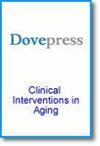血浆致动脉粥样硬化指数、非高密度脂蛋白胆固醇 (Non-HDL-C)、非高密度脂蛋白胆固醇/高密度脂蛋白胆固醇和脂蛋白组合指数对维持性血液透析患者脑卒中发病率和预后的预测价值
IF 3.7
3区 医学
引用次数: 0
摘要
目的:血清脂质水平与动脉粥样硬化密切相关。然而,有关血液透析人群中血脂衍生指数与急性缺血性脑卒中(AIS)发生率之间关系的研究却很有限。本研究旨在探讨血浆致动脉粥样硬化指数(AIP)、非高密度脂蛋白胆固醇(Non-HDL-C)、非高密度脂蛋白胆固醇/高密度脂蛋白胆固醇(Non-HDL-C/HDL-C)和脂蛋白结合指数(LCI)等脂质衍生指数在临床实践中对血液透析患者 AIS 发生和预后的预测价值:本研究共筛查了 451 名接受维持性血液透析的患者,其中 350 名患者入选。血脂参数在各分层中呈逐渐上升趋势,从 Q1 到 Q3 值均呈上升趋势。根据 AIP、Non-HDL-C、Non-HDL-C/HDL-C 和 LCI 值的三等分将入选患者分为三组(Q1、Q2 和 Q3)。采用 Kaplan-Meier 曲线研究血液透析患者的 AIP、Non-HDL-C、Non-HDL-C/HDL-C、LCI 和无 AIS 存活率之间的关系。采用卡方分析探讨血液透析患者的 AIP、Non-HDL-C、Non-HDL-C/HDL-C、LCI 和 AIS 结果之间的关系。AIS结果采用改良Rankin量表(mRS)进行评估:Kaplan-Meier分析显示,就AIP、Non-HDL-C、Non-HDL-C/HDL-C和LCI而言,Q1组的无AIS生存率明显高于Q2和Q3组。对数秩检验显示,Q1 组与 Q2 组和 Q3 组之间的差异具有统计学意义(均为 p < 0.05)。与 Q2-Q3 组相比,Q1 组患者的良好预后 mRS 比例更高(AIP:0.818 vs 0.792;Non-HDL-C:0.866 vs 0.767;Non-HDL-C/HDL-C:0.867 vs 0.767;LCI:0.938 vs 0.750):结论:四种血脂衍生参数可有效预测血液透析患者的 AIS,其中 AIP 与 AIS 风险的相关性最强。与四项脂质衍生指标水平较低的血液透析患者相比,四项脂质衍生指标水平较高的血液透析患者的 AIS 发生率更高,功能预后更差。关键词:血液透析;急性缺血性卒中;血浆动脉粥样硬化指数;非高密度脂蛋白胆固醇;脂蛋白结合指数本文章由计算机程序翻译,如有差异,请以英文原文为准。
The Predictive Value of Atherogenic Index of Plasma, Non- High Density Lipoprotein Cholesterol (Non-HDL-C), Non-HDL-C/HDL-C, and Lipoprotein Combine Index for Stroke Incidence and Prognosis in Maintenance Hemodialysis Patients
Purpose: The serum lipid level is strongly associated with atherosclerosis. However, research on the relationship between lipid-derived indices and acute ischemic stroke (AIS) occurrence in hemodialysis populations is limited. This study aimed to explore the predictive value of lipid-derived indices, including atherogenic index of plasma (AIP), Non- high density lipoprotein cholesterol (Non-HDL-C), Non-HDL-C/HDL-C, and lipoprotein combine index (LCI) in clinical practice for the occurrence and prognosis of AIS in hemodialysis patients.
Methods: A total of 451 patients undergoing maintenance hemodialysis were screened and 350 were enrolled in this study. The lipid parameters exhibit a progressive increase across the tertiles, with values rising from Q1 through Q3. Enrolled patients were divided into three groups (Q1, Q2, and Q3) based on tertiles of AIP, Non-HDL-C, Non-HDL-C/HDL-C, and LCI values. Kaplan-Meier curves were performed to investigate the association between the AIP, Non-HDL-C, Non-HDL-C/HDL-C, LCI and AIS-free survival in hemodialysis patients. Chi-square analysis was used to explore the association between the AIP, Non-HDL-C, Non-HDL-C/HDL-C, LCI and AIS outcomes in hemodialysis patients. AIS outcomes were assessed using the modified Rankin Scale (mRS).
Results: Kaplan-Meier analysis revealed that the AIS-free survival rates were significantly higher in the Q1 group compared to Q2 and Q3 groups for AIP, Non-HDL-C, Non-HDL-C/HDL-C, and LCI. Log rank tests showed statistically significant differences between the Q1 group and the Q2 and Q3 groups (p < 0.05 for all). The proportion of patients with a good outcome mRS was higher in the Q1 group compared to the Q2-Q3 groups (AIP: 0.818 vs 0.792; Non- HDL-C: 0.866 vs 0.767; Non- HDL-C/HDL-C: 0.867 vs 0.767; LCI: 0.938 vs 0.750).
Conclusion: The four lipid-derived parameters are effective predictors of AIS in patients undergoing hemodialysis, and AIP has a strongest correlation with the risk of AIS. Hemodialysis patients with elevated levels of the four lipid-derived indices had a higher incidence of AIS and poorer functional outcomes compared to those with lower levels. Our conclusions may require confirmation by further research in the future.
Keywords: hemodialysis, acute ischemic stroke, atherogenic index of plasma, non-high density lipoprotein cholesterol, lipoprotein combine index
Methods: A total of 451 patients undergoing maintenance hemodialysis were screened and 350 were enrolled in this study. The lipid parameters exhibit a progressive increase across the tertiles, with values rising from Q1 through Q3. Enrolled patients were divided into three groups (Q1, Q2, and Q3) based on tertiles of AIP, Non-HDL-C, Non-HDL-C/HDL-C, and LCI values. Kaplan-Meier curves were performed to investigate the association between the AIP, Non-HDL-C, Non-HDL-C/HDL-C, LCI and AIS-free survival in hemodialysis patients. Chi-square analysis was used to explore the association between the AIP, Non-HDL-C, Non-HDL-C/HDL-C, LCI and AIS outcomes in hemodialysis patients. AIS outcomes were assessed using the modified Rankin Scale (mRS).
Results: Kaplan-Meier analysis revealed that the AIS-free survival rates were significantly higher in the Q1 group compared to Q2 and Q3 groups for AIP, Non-HDL-C, Non-HDL-C/HDL-C, and LCI. Log rank tests showed statistically significant differences between the Q1 group and the Q2 and Q3 groups (p < 0.05 for all). The proportion of patients with a good outcome mRS was higher in the Q1 group compared to the Q2-Q3 groups (AIP: 0.818 vs 0.792; Non- HDL-C: 0.866 vs 0.767; Non- HDL-C/HDL-C: 0.867 vs 0.767; LCI: 0.938 vs 0.750).
Conclusion: The four lipid-derived parameters are effective predictors of AIS in patients undergoing hemodialysis, and AIP has a strongest correlation with the risk of AIS. Hemodialysis patients with elevated levels of the four lipid-derived indices had a higher incidence of AIS and poorer functional outcomes compared to those with lower levels. Our conclusions may require confirmation by further research in the future.
Keywords: hemodialysis, acute ischemic stroke, atherogenic index of plasma, non-high density lipoprotein cholesterol, lipoprotein combine index
求助全文
通过发布文献求助,成功后即可免费获取论文全文。
去求助
来源期刊

Clinical Interventions in Aging
GERIATRICS & GERONTOLOGY-
CiteScore
6.20
自引率
2.80%
发文量
193
期刊介绍:
Clinical Interventions in Aging, is an online, peer reviewed, open access journal focusing on concise rapid reporting of original research and reviews in aging. Special attention will be given to papers reporting on actual or potential clinical applications leading to improved prevention or treatment of disease or a greater understanding of pathological processes that result from maladaptive changes in the body associated with aging. This journal is directed at a wide array of scientists, engineers, pharmacists, pharmacologists and clinical specialists wishing to maintain an up to date knowledge of this exciting and emerging field.
 求助内容:
求助内容: 应助结果提醒方式:
应助结果提醒方式:


